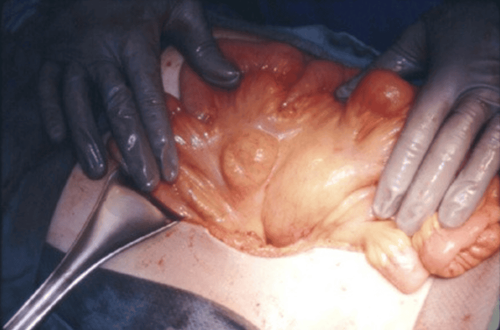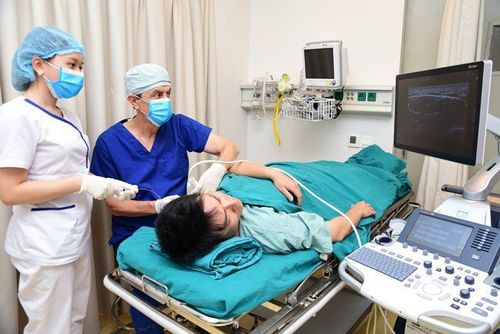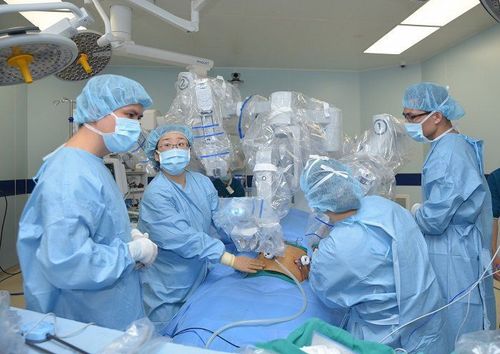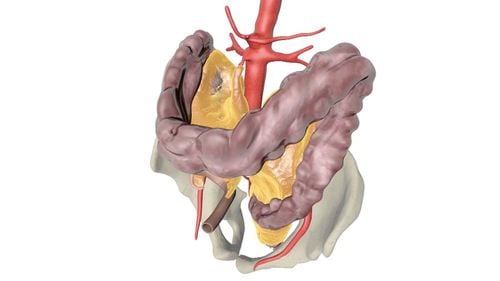This is an automatically translated article.
Primary peritoneal cancer is a rare type of cancer. The disease develops from malignant epithelial and mesothelial cells of the peritoneum. If not detected and treated promptly, these cells will spread to the entire peritoneum, metastasize by blood and lymphatic routes.
1. What is the peritoneum?
The peritoneum is a membrane that covers the organs in the abdomen, pelvis, pelvis, and lower side of the diaphragm, which acts like a membrane to protect and reduce friction between organs.2. What is primary peritoneal cancer?
Primary peritoneal tumor begins to appear in the epithelium, the malignant cells that appear will gradually metastasize to other areas by blood and lymphatic routes.
2.1 Signs of peritoneal cancer The early stage of primary peritoneal cancer presents indistinctly, often. Symptoms gradually increase with the progression of the disease. The patient will have the following symptoms:
Dull abdominal pain, gradually spreading throughout the abdomen Abdominal distention, enlarged abdomen Nausea Rapidly full, anorexia, Unexplained rapid weight loss The body is tired, sluggish Signs More obvious when the disease is in the late stage High fever

Buồn nôn là một trong các dấu hiệu ung thư phúc mạc
On examination, the doctor will discover problems including:
Peritoneal effusion : There may be a bloody or yellow discharge, usually discharge. According to statistics, about 25% of people diagnosed with primary peritoneal cancer have malignant cells in the peritoneal fluid. The concentration of LDH and calcium in the fluid is usually very high. Palpation of a hard tumor in the abdominal wall with intestinal obstruction Laparoscopy showed that the peritoneum was swollen, red, with many micro-vessels. warts on parietal peritoneum and on loops of intestine, omentum. Infiltrated peritoneum: endoscopic image shows thick, hard, rough omentum, plaques, infiltrates on the parietal peritoneum and visceral peritoneum.
2.2 Treatment of primary peritoneal cancer Currently, to destroy malignant cells, avoid the risk of spreading to neighboring areas, primary peritoneal cancer can be treated by 3 methods:
Chemotherapy alone: when the patient cannot perform surgery. Chemotherapy combined with surgery. Surgery to remove the great omentum, possibly even an adnexal hysterectomy. During surgery, it is possible to combine chemotherapy into the abdomen for the purpose of eliminating the spread of cancer cells to the surrounding area. Radiation therapy and antibody therapy. Treat ascites with drainage if the ascites is distended. Parenteral nutrition when the patient cannot eat or drink or is thin and weak. Pain relief treatment by giving patients oral treatment, depending on the level: paracetamol group, non-steroidal anti-inflammatory pain reliever, opiate preparations.
Patient's health status after successful radiotherapy or surgery and signs of improvement when:
Good treatment response: when checked, the patient is free of ascites after 3 chemotherapy treatments , the patient's body gradually improved, the patient was able to live on his own as usual. Partial response to treatment when ascites is reduced or ascites no longer increases, the patient's health is better than before surgery. After treatment, the patient's body does not respond to the following signs: ascites still increases. The condition did not change or showed signs of worsening after 3 chemotherapy treatments. Primary peritoneal cancer is a dangerous disease with a high mortality rate if not detected and treated promptly. Because the disease has few signs and is difficult to diagnose, regular health checkups are extremely important. In case of doubt, the doctor may order additional cancer screening to assess the most accurate.

Người bệnh nên định kỳ kiểm tra sức khỏe giúp phát hiện sớm bệnh lý
Vinmec International General Hospital always ensures professional quality with a team of leading medical doctors, a system of modern technological equipment and comprehensive medical examination and treatment services that will bring customers the best medical services. best service. Therefore, when in need, you should contact the hospital for support, advice and appointment as soon as possible.
Please dial HOTLINE for more information or register for an appointment HERE. Download MyVinmec app to make appointments faster and to manage your bookings easily.













